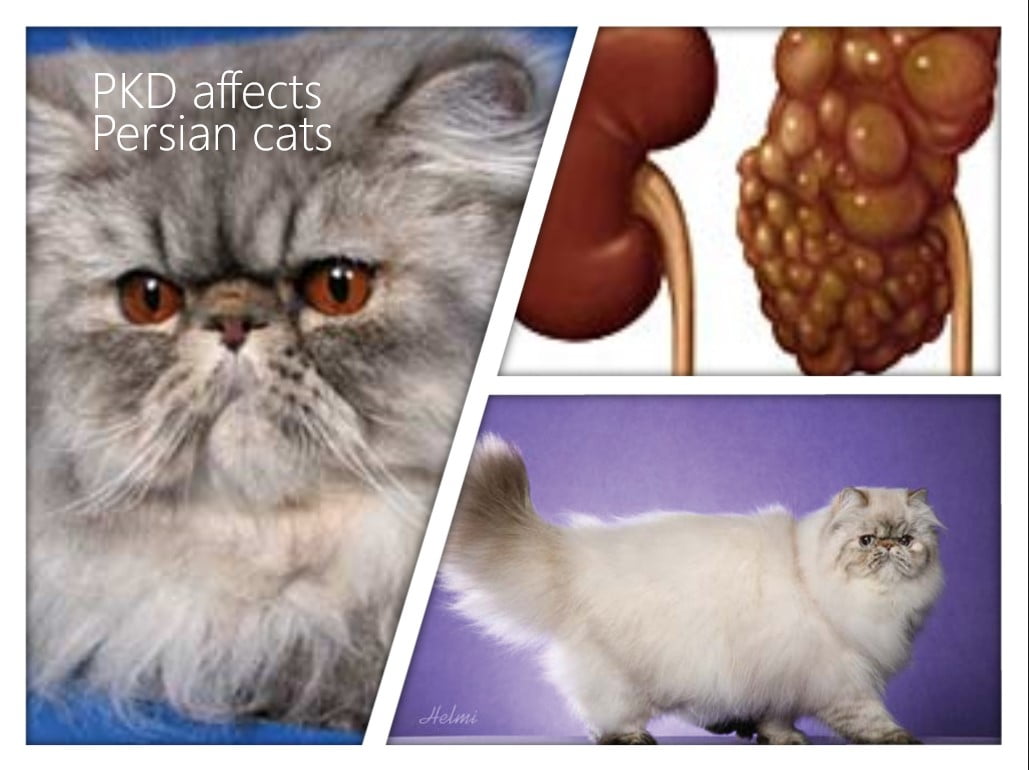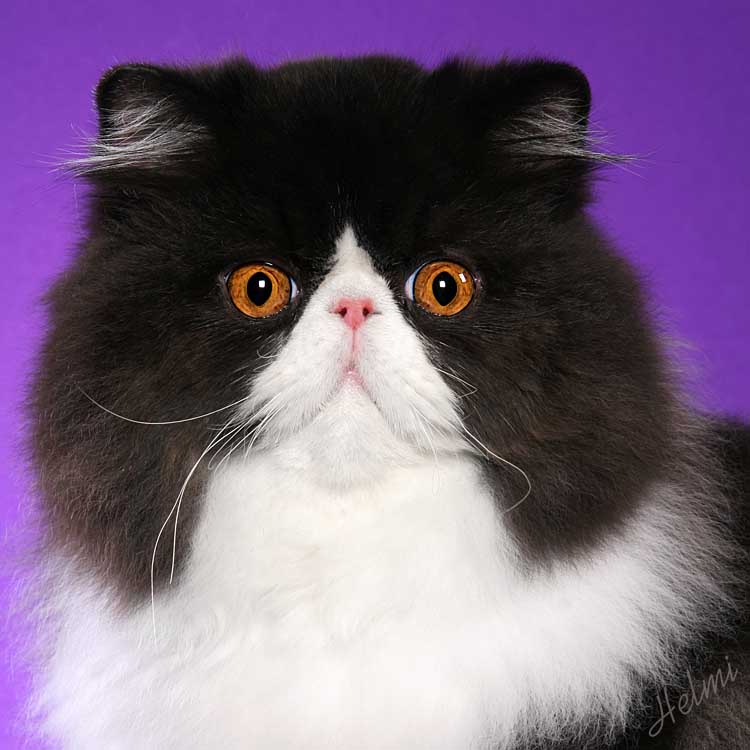The Persian cat’s life expectancy is almost 4 years shorter than the general cat population for one major reason: polycystic kidney disease (PKD). The Internet tells me that Persian cats on average live for about 13.5 years. I have also seen a median age of 14.1 years and 10-15 years. Dr Bruce Fogle DVM, the author and veterinarian, provides the information regarding their lifespan being four years shorter than average in his book Complete Cat Care. I have also seen a lifespan of 7.5 years for cats suffering with PKD. Remember the average lifespan includes cats without PKD.

He says that the inherited disease PKD affects approximately 40 percent of Persians and the breeds associated with them genetically such as the Exotic Shorthair. The advice is to select a breeder who only breeds from lines which have been genetically tested and proven not to carry the disease. The health problems of the Persian cat are considerable which is suprising since it a very popular breed despite.
Study
A recent study was published in September 2019 on the Royal Veterinary College website.

The study concluded that Persian cats are at a high risk of health problems. The most common conditions diagnose in the Persian cat other than PKD were revealed as hair coat disorders, dental disease, eye discharge and overgrown nails (this appears to be about poor maintenance rather than a health condition). Eye discharge may refer to tear duct overflow due to cat’s flat face which alters the anatomy of the tear duct so that it does not drain tears away effectively. The tears therefore spill over and run down the face.

The study also concluded that 64.9 percent of Persian cats had at least one disorder. The most common other than PKD concerned their haircoat (12.7 percent). Perhaps this is due to the fact that selective breeding results in an exceptionally long coat at up to 5 inches or 12 centimetres in length. Their human caregivers need to devote some time to helping their cat to groom by combing and brushing.
The study found that the most common cause of death was kidney disease which is an oblique reference to PKD. They say that 23.4 percent of cats died of kidney disease. This cannot be reconciled with Dr Bruce Fogle’s statistic. On PoC, I have said that about 35 percent of Persian cats suffer from this disease.

Shortened head
There is also no question that the brachycephalic head with the flat face due to selective breeding causes some of these health issues. “Brachycephalic” means short-headed. Brachycephalic headed dogs are also popular today. They also suffer from health problems due to their anatomy.
GCCF comment
There are about 100,000 Persian cats in the UK. The premier cat breeders association in the UK, The Governing Council of the Cat Fancy (GCCF) was asked to comment on the conclusions of the study. Their response was ambivalent and noncommittal in my view. They said that they welcomed the findings but wanted more information through more studies at “defining the degree of branchycephaly that contributes to the associated health problems”. They are kicking the can down the road in my view. This highlights the lack of commitment of cat associations generally to prioritise appearance over health.
Siamese cat
I have to mention the Siamese cat as this is also a cat with a long history (and they are popular). Wikipedia says that the median lifespan of the Siamese group (meaning the family of Siamese cats of which there are many) is somewhere between 10 and 12.5 years. Almost 70 percent lived to 10 years or more and 42 percent lived to 12.5 years or more. The lifespan of the Siamese cat is also shorter than average by a similar amount to the Persian. The Siamese cat has a long list of genetically inherited health problems.


Saturday(22/8/2020) DEMISE OF ICONIC CAT MATAHARI, A CATALYST IN FORMATION OF CAT CLUBS IN INDIA :- Its with deep sadness that i Rudolph Andrew Furtado announce the death of my 13 years old non-human companion “Queen Cat Matahari” .She expired today morning at approx 0800 hrs after suddenly taking ill yesterday morning with the most probable cause being cancer combined with “Old age”.In human terms she was 68 + years old.She died peacefully surrounded by her human family and with her 11 year old kitten now “Tomcat Matata” keeping a vigil over her. 13 years + is a long lifespan and she filled my life with “Cat humour” and entertainment besides being the inspiration role model for creating “Cat Clubs” as well as a catalyst in formation of India’s first “Cat Show”.Now there is one less member in my household but the memories will live on.The image of her sitting on the window gallery ledge for the last 12 years will be missed by one and all.To quote Lord Alfred Tennyson , quote, “Its better to have loved and lost than never to have loved at all”.She was buried at iconic “PRABHADEVI BEACH” which is the sea facing graveyard of my previous two dog’s “Blondie” and “Lucky” as well as cat “Trixie”.Thanks to fisherman Shri Mahadeo for digging the grave at a time when the “Coronavirus Pandemic” is creating havoc and a scare among us all humans.Yes, the SEA always beckons the living as well as the dead . R.I.P “Matahari”.